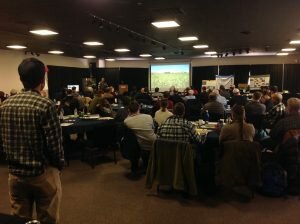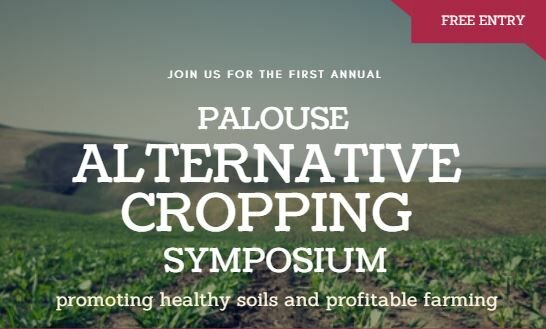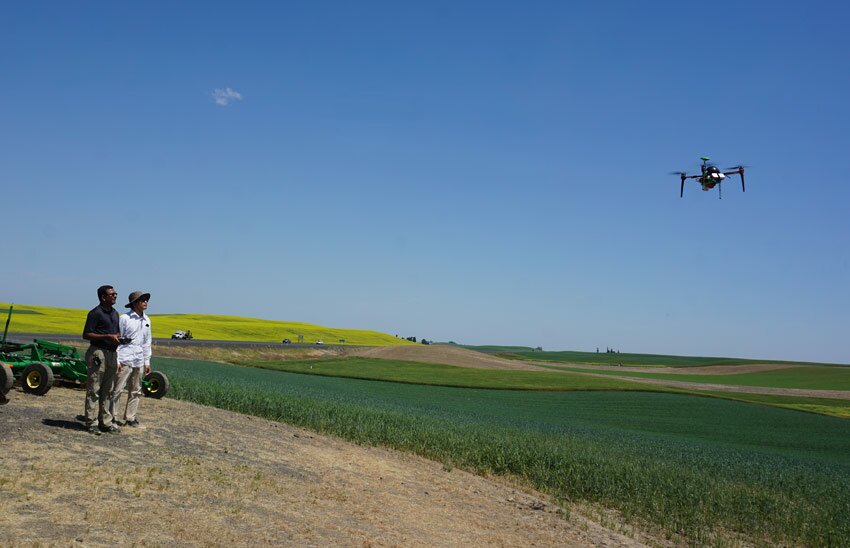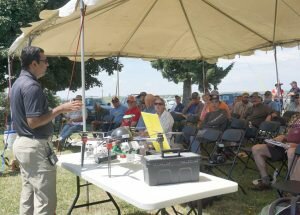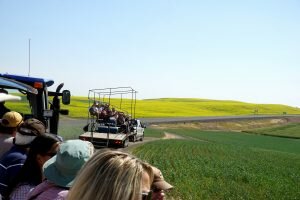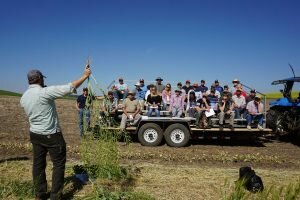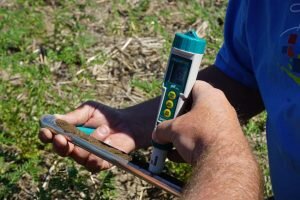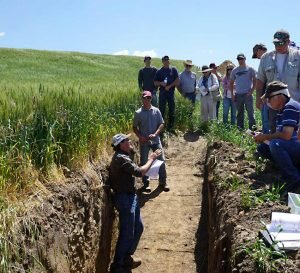These are the first reports for the eight new contracts for 2017-2020 and for the continuation in 2017 of the first round of projects, which received additional funding. The results are encouraging and, in some cases, fascinating. By demonstrating positive outcomes, these results will promote better soil practices in our state.
Palouse Rock Lake Conservation District:
A new project to measure and compare moisture retention in cover crop fallow and direct seed fallow.
This study is a home run. By comparing moisture retention every four inches up to 48” in side by side cover crop fallow and direct seed fallow, the study has these results so far:
- No net loss of moisture in cover crop fallow as compared to direct seed fallow
- Decrease in soil temperature in cover crop fallow, which benefits soil organisms
- Suppression of weeds without herbicides
- Reduction of soil compaction, which enhances moisture absorption and retention
- Reduction in soil erosion
- Early signs of possible increase in yield
San Juan Conservation District:
Continuation of biochar project begun in 2016. Following up on the original six-farm test plots, in which biochar was added to soil, the yield will be evaluated in the spring of 2018. In addition to the test plots, biochar kilns were designed and provided to forest landowners on each of the four ferry-served islands. Workshops were offered on each island to demonstrate how to make biochar from forest waste. Online instructions are available for making biochar at home.
Biochar was added as an alternative to the slash burns in the County’s draft Solid Waste Management Plan.
The San Juan CD also starts a new three-year project to introduce no till-direct seed practices to the county, including use of cover crops to improve soil health and limit use of chemicals.
Underwood Conservation District:
Completion of original 2015-2016 project to monitor soil moisture in test plots in an orchard, using a control plot, a plot with compost, and a plot with compost and mulch
Results so far show no significant difference in moisture. We are waiting to hear if there is any difference in productivity (yield). We have questions about the 2017 workshop: how may attended, who were the presenters, and what did they present?
Washington Environmental Council:
Continuation of Nisqually Community Forest project which aims to create a template for sustainable forest practices in Pacific Northwest forests.
- The project has linked sustainable forest practices with improvements in both water quality and quantity
- DOE’s Clean Water Revolving fund was changed to allow sustainable forest projects including forest land purchases
- First certified Carbon Project with 520 acres saved from clear-cutting with Microsoft buying the carbon credits
- Set up protocol and step-by-step process for creating and selling carbon credits to offset the cost of land purchases
- Demonstrating that by growing trees longer, e., longer harvest rotations, the forest is more resilient and stores more carbon over time; older forests also provide better wildlife habitat
Whitman Conservation District:
Experiments with various cover crops in the Palouse to identify those best for fall and for spring and to determine whether pelletized compost adds extra yield or other ecological benefits. This will be evaluated in the spring of 2018.
Washington State University: Soil Health Field Day
Soil Health Field Day in Davenport at the experimental farm. Well attended with dozens of farmers and conservationists. Highlighted soil differences between no-till and conventional test plots.
Washington State University:
First year of three-year study of soil characteristics in irrigated agriculture in Eastern Washington.
- 60 soil samples were studied from 30 growers to establish a baseline.
- Some of the results were surprising, for example, that the amount of soil fines was inexplicably low in many sites.
- Several “exemplary soils” were discovered, which were also surprising. More research will be done to discover the secret of those exemplary soils
- This study includes a process of evaluating which soil health measurements are of value, and which are not.
